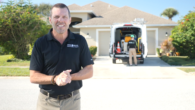How to Identify Hail Damage on Your Roof
March 20, 2020
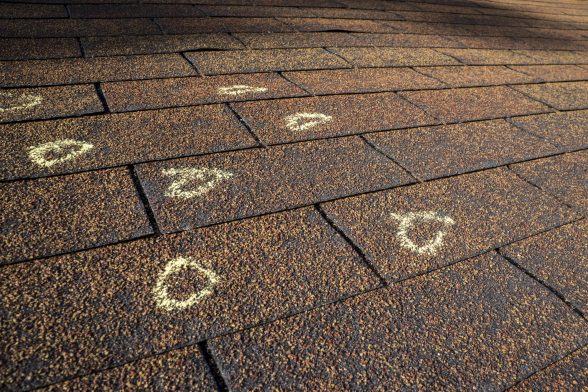
Your roof is what keeps you safe and dry from the elements. However, your roof is vulnerable to extreme weather conditions and can easily become damaged during hail storms. Unfortunately, identifying this damage isn’t always easy, causing hail damage to shingles to go unnoticed until it’s too late.
While getting a roof inspection is the best way to detect hail damage to shingles, learning the key signs of hail damage can help you identify and fix the problem before it worsens.
Why It’s Important to Get a Professional Roof Inspection for Hail Damage
Your roof is integral to the structure and safety of your home. Getting a roof inspection for hail damage to shingles is the best way to ensure the integrity of your roof, prevent further damage, and safeguard your home.
Inspectors can spot hail and storm damage and detect early signs of wear and damage you might overlook, helping prevent minor issues from escalating into costly repairs. Regular inspections, especially after severe weather, can extend the life of your roof and safeguard your home from water damage, insulation problems, and structural weaknesses.
Is Fixing Hail Damage to Shingles Necessary?
Absolutely. Addressing hail damage to shingles is essential to maintaining your home’s structural integrity. Even minor dents or cracks in your shingles from hail can expose your home to water, leading to leaks, mold, and weakened roof decking.
Over time, what starts as minor hail damage to shingles can escalate into significant, costly issues, including compromised insulation, rotten beams, damaged drywall, and increased energy costs.
Prompt repairs ensure your roof continues functioning optimally, protecting your home from further damage. Repairs aren’t just necessary; they’re a wise investment in your home’s longevity.
Does Insurance Cover Hail Damage Repairs?
Most homeowner’s insurance policies classify hail as a peril and provide at least some coverage. However, coverage can vary significantly between policies, insurers, and the extent of the damage. Additionally, some insurers only provide coverage for a specific time after the damage occurs, so you should always check for damage after a severe storm.
It’s imperative to review your insurance terms and consult with your provider promptly after the damage occurs. They will assess the situation and determine the extent of coverage. Always maintain detailed damage records to facilitate a smoother insurance claim process.
The Top 3 Signs of Hail Damage to Shingles
If you’d like to take matters into your own hands or perform an initial check while waiting for a roofing inspector to visit your home, here’s a look at the top three signs of hail damage to shingles.
Missing Granules
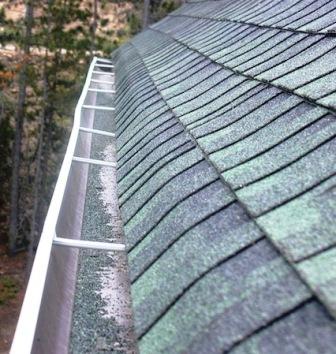
Granules can become loose and fall off for many reasons. However, if you notice a lot of granules in your downspouts or gutters after a hail storm, you could have hail damage on your asphalt shingles.
It’s a good idea to climb up on your roof and carefully inspect your shingles for missing granules. Exposed roofing or plywood sheathing are indicators of hail damage to shingles that must be promptly repaired to prevent further damage. Additionally, you’ll want to pay attention to the wind direction of the storm. Your shingles will show the most signs of damage in the direction of the hail.
Cracked Shingles
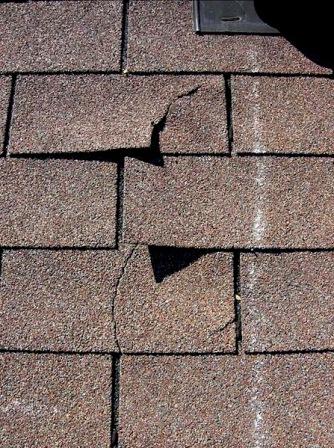
Once granules have become loose, shingles become weak and brittle. During a hailstorm, these weakened shingles can crack or curl. Identifying cracks in your shingles is relatively straightforward. As you inspect your roof, look for any shingles with obvious cracks or curls in them. You may need to run your hand over some of your shingles to identify a crack. While other factors can cause cracks in your shingles, cracks are also a common sign of hail damage to shingles.
Bruised or Dented Shingles
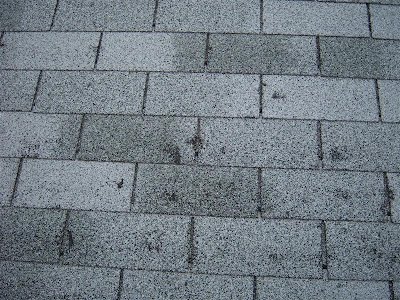
Bruises are a common sign of hail damage to shingles. However, finding bruises in shingles is not easy. Oftentimes, finding bruises can only be done by touch. You’ll know a shingle is bruised because it will feel soft—like an apple that has been bruised. Once you’ve found a bruise, press down on it gently to see if there’s any give. If the shingle gives way, it’s a key indicator that it’s started to deteriorate.
Dented shingles or small round or tear-shaped dents in your gutters, downspouts, or metal flashing are a common sign of hail damage. You’ll also want to look for pitted spots where hail impacted the roof.
Repairing Hail Damage to Shingles
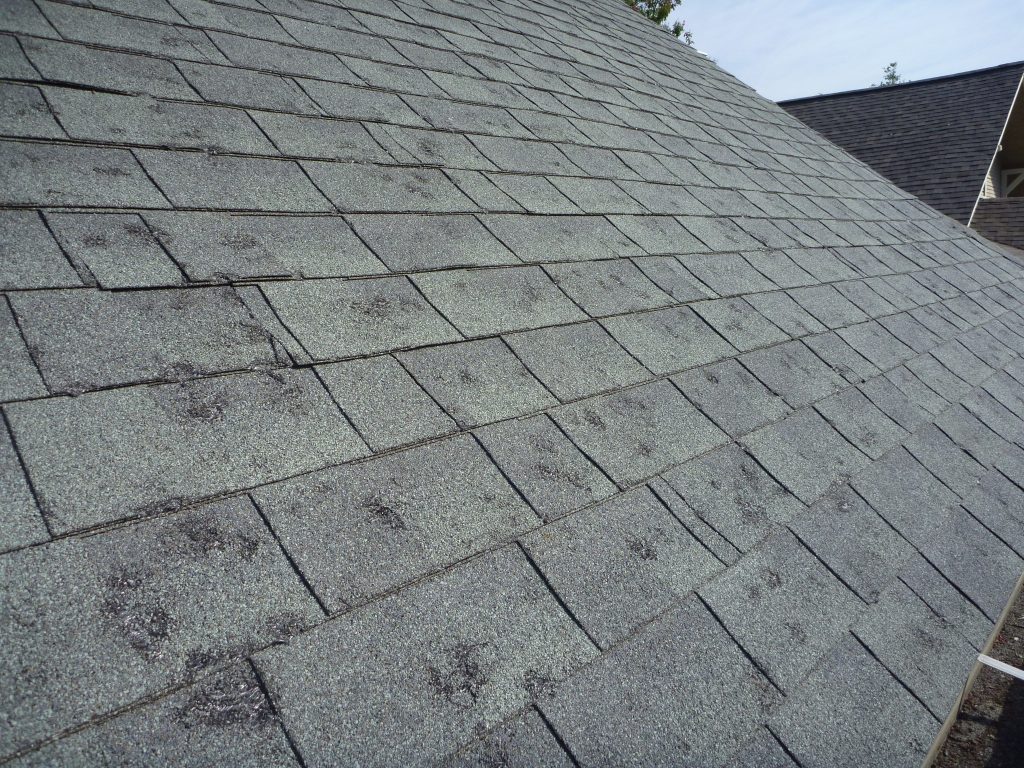
While some hail damage may be cosmetic, others can lead to even more significant issues. Damaged or broken shingles are no longer waterproof and can’t keep water out of your home. Water can easily seep into the underlayment or decking beneath your shingles, wreaking havoc on your house, compromising your home’s safety, and potentially causing health and safety risks due to mold and compromised structural integrity.
Fortunately, prompt repairs can prevent damage from spreading to other parts of your roof and home. If you or an inspector have discovered hail damage to shingles, we recommend filing an insurance claim and hiring a reliable roofing company to perform the repair. Improper repairs or improperly installed shingles can cause more damage, and it’s common for insurers to require that a professional perform repairs.
Preventing Hail Damage to Shingles
While you may not be able to prevent a hailstorm, there are steps you can take to mitigate your risk of hail damage to shingles. Here are some essential tips for preventing damage and giving your roof the strength and durability it needs to protect your home during severe weather:
- Don’t Skip Your Annual Roof Inspections: Regular inspections are pivotal in detecting minor issues before they escalate. A professional can identify vulnerabilities that will increase the likelihood of hail damage to shingles. An annual check-up can extend the lifespan of your shingles and ensure they’re hail-ready.
- Keep Your Trees Trimmed: Keeping trees trimmed neatly reduces the risk of branches breaking off and falling on your roof during a storm, thereby minimizing potential damage.
- Never Put Off Roofing Repairs: Postponing repairs can lead to compounded damage, especially when hail strikes. Promptly addressing issues can prevent small, compromised areas from becoming larger targets for hail damage.
- Choose Hail-Resistant Roofing Materials on Your Next Roof Replacement: When it’s time for a new roof, opt for materials rated for hail resistance. These specialized shingles are designed to absorb impact and resist breaking, offering an added layer of protection.
Strengthen Your Shingles with Roof Maxx: Roof Maxx is a treatment that can increase the durability of your existing shingles. This can help them better withstand the force of hail, potentially reducing the extent of hail damage.
Strengthen Your Shingles with Roof Maxx
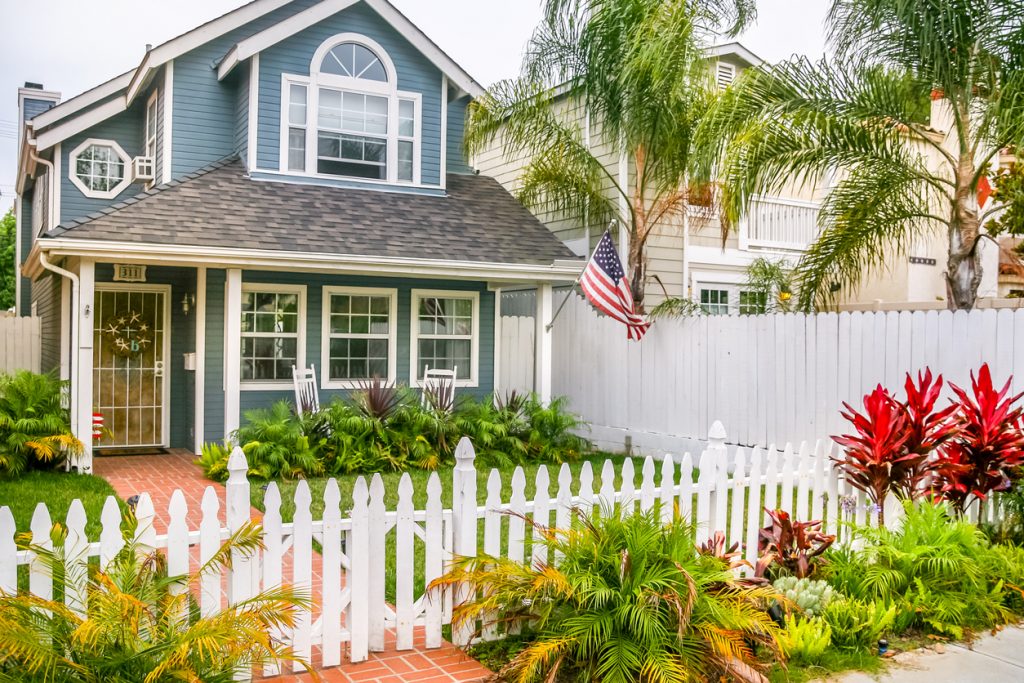
If you have hail damage to shingles, contact an expert at Roof Maxx. We’ve created a roofing spray that rejuvenates your shingles and gives them the durability they need to withstand hail.
Have questions about us, our prices, or our services? Visit our FAQ page.








